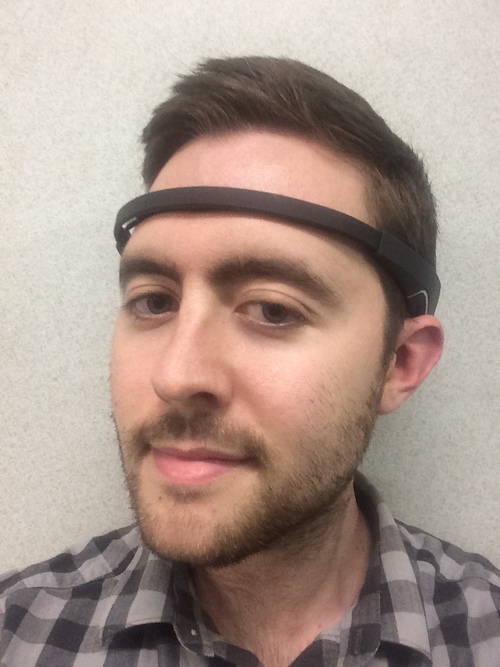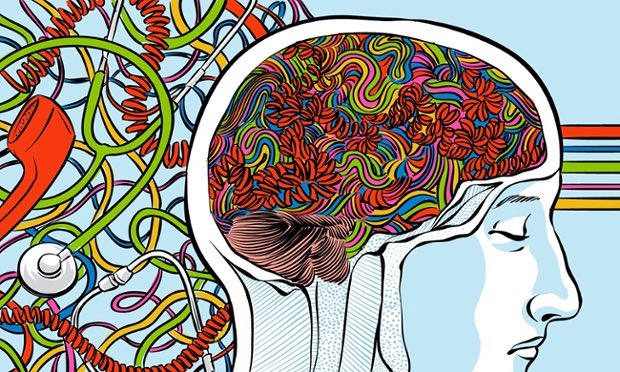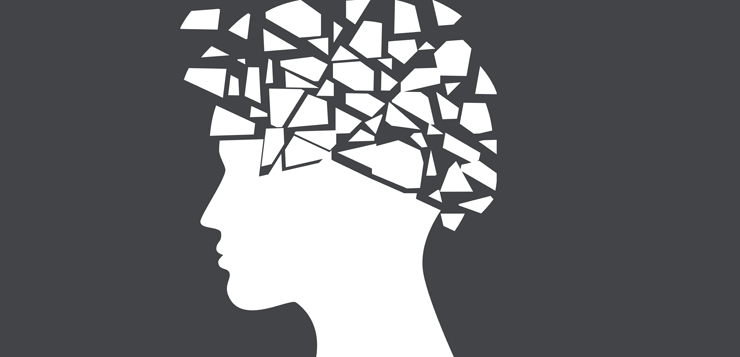“By developing an understanding of the workings of your vagus nerve, you may find it possible to work with your nervous system rather than feel trapped when it works against you.”
Stimulation of my vagus nerve has played a key role in the management of my anxiety and mental health over the years.
What exactly is the vagus nerve?
The vagus nerve is the longest cranial nerve in your body.
It connects your brain to many important organs throughout the body, including the gut (intestines, stomach), heart and lungs.
In fact, the word "vagus" means “wanderer” in Latin, which accurately represents how the nerve wanders all over the body and reaches various organs.
The vagus nerve is also a key part of your parasympathetic “rest and digest” nervous system. It influences your breathing, digestive function and heart rate, all of which can have a huge impact on your mental health.
But what you really need to pay special attention to is the "tone" of your vagus nerve.
Vagal tone is an internal biological process that represents the activity of the vagus nerve.
Increasing your vagal tone activates the parasympathetic nervous system, and having higher vagal tone means that your body can relax faster after stress.
In 2010, researchers discovered a positive feedback loop between high vagal tone, positive emotions, and good physical health. In other words, the more you increase your vagal tone, the more your physical and mental health will improve, and vice versa (5).
“It’s almost like yin and yang. The vagal response reduces stress. It reduces our heart rate and blood pressure. It changes the function of certain parts of the brain, stimulates digestion, all those things that happen when we are relaxed.”
What’s interesting is that studies have even shown that vagal tone is passed on from mother to child. Mothers who are depressed, anxious and angry during their pregnancy have lower vagal activity. And once they give birth to their child, the newborn also has low vagal activity and low dopamine and serotonin levels (1-3).
Your vagal tone can be measured by tracking certain biological processes such as your heart rate, your breathing rate, and your heart rate variability (HRV).
When your heart rate variability (HRV) is high, your vagal tone is also high. They are correlated with each other (53-55).
You can increase your HRV by using the EmWave2 device (and this article shares 24 other ways to increase your HRV).
Some researchers actually use the EmWave2 to measure vagal tone in their studies.
If your vagal tone is low, don’t worry - you can take steps to increase it by stimulating your vagus nerve. This will allow you to more effectively respond to the emotional and physiological symptoms of your brain and mental illness.
Stimulating the vagus nerve and increasing vagal tone has been shown to help treat a wide variety of brain and mental health conditions, including:
Migraines
Tinnitus
Autism
Bulimia nervosa
Personality disorders
Mood disorders in the elderly
Severe mental diseases
Chronic fatigue syndrome
For people with treatment-resistant depression, the FDA has even approved a surgically-implanted device that periodically stimulates the vagus nerve. And it works (6-9).
But you don’t need to go down that route.
You can enjoy the benefits of vagus nerve stimulation naturally by following these 13 steps.
1. Cold Exposure
Acute cold exposure has been shown to activate the vagus nerve and activate cholinergic neurons through vagus nerve pathways (10).
Researchers have also found that exposing yourself to cold on a regular basis can lower your sympathetic “fight or flight” response and increase parasympathetic activity through the vagus nerve (11).
I often take cold showers and go outside in cold temperatures with minimal clothing.
Try finishing your next shower with at least 30 seconds of cold water and see how you feel. Then work your way up to longer periods of time.
It's painful to do, but the lingering effects are worth it.
You can also ease yourself into it by simply sticking your face in ice cold water.
2. Deep and Slow Breathing
Deep and slow breathing is another way to stimulate your vagus nerve.
It’s been shown to reduce anxiety and increase the parasympathetic system by activating the vagus nerve (51-52).
Most people take about 10 to 14 breaths each minute. Taking about 6 breaths over the course of a minute is a great way to relieve stress. You should breathe in deeply from your diaphragm. When you do this, your stomach should expand outward. Your exhale should be long and slow. This is key to stimulating the vagus nerve and reaching a state of relaxation.
The best way to know if you’re on the right track is by using the EmWave2 device. It’s a biofeedback device that assists you in pacing your breathing. I previously wrote about the benefits of using the device here. You can get it through the HeartMath website.
3. Singing, Humming, Chanting and Gargling
The vagus nerve is connected to your vocal cords and the muscles at the back of your throat.
Singing, humming, chanting and gargling can activate these muscles and stimulate your vagus nerve.
And this has been shown to increase heart-rate variability and vagal tone (12).
I often gargle water before swallowing it. This is discussed more in Dr. Datis Kharrazian’s book, Why Isn’t My Brain Working?
4. Acupuncture
Acupuncture is another alternative treatment that has been shown to stimulate the vagus nerve (46).
I’m a really big fan of auricular acupuncture. Auricular acupuncture is when needles are inserted into ear. I’d recommend trying to find a health practitioner in your area who provides it, especially if you’re weening off psychiatric medication. It really helped me the first time I came off antidepressants. I was surprised.
Research shows that ear acupuncture stimulates the vagus nerve, increases vagal activity and vagal tone, and can help treat “neurodegenerative diseases via vagal regulation” (45).
In my experience, ear acupuncture is more effective than regular acupuncture. I’m not sure why. I’ve just personally noticed more benefits from ear acupuncture.
At the end of each appointment, my practitioner would secure small black seeds on my ear.
I also use an acupuncture mat at home to relax before bed.
5. Yoga and Tai Chi
Yoga and tai chi are two “mind-body” relaxation techniques that work by stimulating the vagus nerve and increasing the activity of your parasympathetic “rest and digest” nervous system.
Studies have shown that yoga increases GABA, a calming neurotransmitter in your brain. Researchers believe it does this by “stimulating vagal afferents”, which increase activity in the parasympathetic nervous system (13-18).
Researchers have also found that yoga stimulates the vagus nerve and therefore should be practiced by people who struggle with depression and anxiety (19).
Despite all the great research, I’m personally not a big fan of yoga. A lot of people swear by it but it’s just not for me. I prefer tai chi.
Tai chi has also been shown to increase heart rate variability, and researchers think this means it can “enhance vagal modulation” (20).
6. Probiotics
It’s becoming increasingly clear to researchers that gut bacteria improve brain function by affecting the vagus nerve (27).
In one study, animals were given the probiotic Lactobacillus Rhamnosus, and researchers found positive changes to the GABA receptors in their brain, a reduction in stress hormones, and less depression and anxiety-like behaviour.
The researchers also concluded that these beneficial changes between the gut and the brain were facilitated by the vagus nerve. When the vagus nerve was removed in other mice, the addition of Lactobacillus Rhamnosus to their digestive systems failed to reduce anxiety, stress, and improve mood (25).
Another study found that the probiotic Bifidobacterium Longum normalized anxiety-like behavior in mice by acting through the vagus nerve (26).
Both Lactobacillus Rhamnosus and Bifidobacterium Longum are included in the Optimal Biotics supplement.
I previously wrote about some other ways you can increase the good bacteria in your gut. You can read about that here.
And here are 7 other probiotic strains that can help treat anxiety.
7. Meditation and Neurofeedback
Meditation is my favourite relaxation technique and it can stimulate the vagus nerve and increase vagal tone.
Research shows that meditation increases vagal tone and positive emotions, and promotes feelings of goodwill towards yourself (22, 23).
Another study found that meditation reduces sympathetic “fight or flight” activity and increases vagal modulation (21).
“OM” chanting, which is often done during meditation, has also been shown to stimulate the vagus nerve (24).
I couldn’t find any research demonstrating this, but in my experience, neurofeedback significantly increased my heart-rate variability and vagal tone as measured by my EmWave2.
Now that I’m done neurofeedback, I use the Muse headband to meditate. Similar to neurofeedback, it gives you real-time feedback on your brainwaves. I previously wrote about it here, and you can get it through the Muse website.
Please note: If you’re interested in trying neurofeedback, I recommend becoming a client and working with us to determine the best type of neurofeedback for you and your condition. I have found that some types of neurofeedback are completely ineffective and may even be harmful. So it’s very important to do the right type of neurofeedback that actually works. It’s also critical to work with a qualified neurofeedback practitioner who knows what they are doing. Otherwise, you can get worse. We help our clients find a qualified practitioner in their area.
8. Omega-3 Fatty Acids
Omega-3 fatty acids are essential fats that your body cannot produce itself. They are found primarily in fish and are necessary for the normal electrical functioning of your brain and nervous system.
They often appear in most of my posts because they are so critical for brain and mental health and affect so many aspects of wellness.
They’ve been shown to help people overcome addiction, repair a “leaky brain”, and even help reverse cognitive decline.
But researchers have also discovered that omega-3 fatty acids increase vagal tone and vagal activity (35-37, 40).
Studies shown that they reduce heart rate and increase heart rate variability, which means they likely stimulate the vagus nerve (34, 38, 39).
And high fish consumption is also associated with “enhanced vagal activity and parasympathetic predominance” (35).
That's why I eat lots of wild-caught salmon, as well as supplement with krill oil.
9. Exercise
I’ve already discussed how exercise increases your brain’s growth hormone, supports your brain’s mitochondria, and helps reverse cognitive decline.
But it’s also been shown to stimulate the vagus nerve, which may explain its beneficial brain and mental health effects (28).
Many brain health experts recommend exercise as their number one piece of advice for optimal brain health.
This is my exercise routine:
Lift heavy weights 1-4 times per week
High-intensity interval sprinting 1-2 times per week
Walk as much as I can (ideally 30-60 minutes every day)
Walking, weightlifting and sprinting are the best forms of exercise, but you should choose a sport or exercise routine that you enjoy, so that you’ll stick with it consistently.
10. Zinc
As I’ve discussed before, zinc is an essential mineral for mental health, especially if you struggle with chronic anxiety.
One study shows that zinc increases vagus nerve stimulation in zinc-deficient rats (41).
It’s estimated that 2 billion people in the world are deficient in zinc, and six different studies show that subclinical deficiency of zinc impairs brain function in children and adults (42-44).
So, if you struggle with a brain or mental health disorder, it’s quite possible that you’re deficient.
Some of the best food sources of zinc include oysters, grass-fed beef, pumpkin seeds, cashews, mushrooms and spinach. These foods are included in my Free Grocery Shopping Guide for Optimal Brain and Mental Health.
However, I still recommend at least short-term supplementation to ensure you get enough.
I created and take the Optimal Zinc supplement to make sure my zinc levels are optimal.
Check out my previous post about zinc and copper if you’re interested in discovering more steps you can take to increase your zinc levels.
11. Massage
Research shows that massages can stimulate the vagus nerve, and increase vagal activity and vagal tone (31-32).
The vagus nerve can also be stimulated by massaging several specific areas of the body.
Foot massages (reflexology) have been shown to increase vagal modulation and heart rate variability, and decrease the “fight or flight” sympathetic response (29).
Massaging the carotid sinus, an area located near the right side of your throat, can also stimulate the vagus nerve to reduce seizures (30).
I personally get a massage from a registered massage therapist every couple of months.
12. Socializing and Laughing
I’ve already discussed how socializing and laughing can reduce your body’s main stress hormone.
And now I’ve learned that they are likely doing this by stimulating the vagus nerve.
Researchers have discovered that reflecting on positive social connections improves vagal tone and increases positive emotions (47, 48).
Laughter has been shown to increase heart-rate variability and improve mood (49).
And vagus nerve stimulation often leads to laughter as a side effect, suggesting that they are connected and influence one another (50).
So my advice is to hang out and laugh with your friends as much as possible. Although I should probably be taking my own advice here, as I’m an introvert and often avoid socializing too much.
13. Intermittent Fasting
On most days, I don’t eat breakfast at all, and then "break my fast" by eating my first meal of the day around 2 or 3 p.m. That means I eat all my food for the day within an 8-hour window.
There are many health benefits to doing this. As I’ve discussed before, intermittent fasting can boost your brain’s growth hormone, improve mitochondrial function, and may help some people overcome brain fog and cognitive decline.
Research also shows that fasting and caloric restriction increase heart rate variability, which is an indicator that it increases parasympathetic activity and vagal tone (33).
The best way to start fasting is simply by eating dinner around 6, not eating anything after that before bed, and then eating a regular breakfast the next day. That should give you about 12-14 hours of fasting time.
Conclusion
You don’t have to be controlled by your body and mind. You have the power to tell them what to do.
By stimulating the vagus nerve, you can send a message to you body that it’s time to relax and de-stress, which leads to long-term improvements in mood, wellbeing and resilience.
Increasing my vagal tone has allowed me to overcome anxiety and depression, and better manage them when they arise.
Overall, I hope you implement some of the above steps into your daily life, and they allow you to live more optimally.
References:
(1) https://www.ncbi.nlm.nih.gov/pubmed/12768648
(2) https://www.https://www.ncbi.nlm.nih.gov/pubmed/12521495/.nlm.nih.gov/pubmed/12521495/
(3) https://www.ncbi.nlm.nih.gov/pmc/articles/PMC2556849
(4) https://www.ncbi.nlm.nih.gov/pmc/articles/PMC3705176/
(5) http://pss.sagepub.com/content/early/2013/05/06/0956797612470827.abstract
(6) http://www.webmd.com/depression/vagus-nerve-stimulation#1
(7) https://www.ncbi.nlm.nih.gov/pmc/articles/PMC2990624/
(8) https://www.sciencedaily.com/releases/2016/02/160204111728.htm
(10) https://www.ncbi.nlm.nih.gov/pubmed/11447037
(11) https://www.ncbi.nlm.nih.gov/pubmed/18785356
(12) https://www.ncbi.nlm.nih.gov/pmc/articles/PMC3705176/
(13) https://www.ncbi.nlm.nih.gov/pmc/articles/PMC3111147/
(14) https://www.ncbi.nlm.nih.gov/pubmed/12568274
(15) https://www.ncbi.nlm.nih.gov/pubmed/12090812
(16) https://www.ncbi.nlm.nih.gov/pmc/articles/PMC2176143/
(17) https://www.ncbi.nlm.nih.gov/pubmed/16641939
(18) https://www.ncbi.nlm.nih.gov/pubmed/15750381
(20) https://www.ncbi.nlm.nih.gov/pubmed/18991518
(21) https://www.ncbi.nlm.nih.gov/pmc/articles/PMC3546358/
(22) http://healthland.time.com/2013/05/09/why-kindness-can-make-us-happier-healthier/?iid=hl-main-lead
(23) https://www.ncbi.nlm.nih.gov/pubmed/23649562
(24) https://www.ncbi.nlm.nih.gov/pmc/articles/PMC3099099/
(25) http://www.ncbi.nlm.nih.gov/pubmed/21876150
(26) https://www.ncbi.nlm.nih.gov/pmc/articles/PMC3413724/
(27) https://www.ncbi.nlm.nih.gov/pmc/articles/PMC4367209/
(28) http://www.ncbi.nlm.nih.gov/pubmed/20948179
(29) https://www.ncbi.nlm.nih.gov/pubmed/22314629
(30) http://www.ncbi.nlm.nih.gov/pubmed/23962632
(31) https://www.ncbi.nlm.nih.gov/pmc/articles/PMC3133856/
(32) https://www.ncbi.nlm.nih.gov/pmc/articles/PMC2844909/
(33) http://www.ncbi.nlm.nih.gov/pubmed/16581971
(34) https://www.ncbi.nlm.nih.gov/pubmed/17326331
(35) https://www.ncbi.nlm.nih.gov/pmc/articles/PMC3217222/
(36) https://www.ncbi.nlm.nih.gov/pubmed/16616012/
(37) https://www.ncbi.nlm.nih.gov/pubmed/18461305
(38) https://www.ncbi.nlm.nih.gov/pmc/articles/PMC3483717/
(39) https://www.ncbi.nlm.nih.gov/pubmed/17134636
(40) https://www.ncbi.nlm.nih.gov/pmc/articles/PMC3653417/
(41) http://www.ncbi.nlm.nih.gov/pubmed/19158231
(42) http://www.ncbi.nlm.nih.gov/pubmed/22664333
(43) http://www.ncbi.nlm.nih.gov/pubmed/21939673
(44) http://www.ncbi.nlm.nih.gov/pubmed/22673824
(45) https://www.hindawi.com/journals/ecam/2012/786839/
(46) https://www.ncbi.nlm.nih.gov/pubmed/24359451
(47) https://www.ncbi.nlm.nih.gov/pubmed/23649562
(48) http://journals.sagepub.com/doi/abs/10.1177/0956797612470827
(49) https://www.ncbi.nlm.nih.gov/pubmed/22894892
(50) http://www.ncbi.nlm.nih.gov/pubmed/12959437
(51) http://www.npr.org/2010/12/06/131734718/just-breathe-body-has-a-built-in-stress-reliever
(52) https://www.hindawi.com/journals/ecam/2013/743504/
(53) http://circ.ahajournals.org/content/118/8/863.long
(54) https://en.wikipedia.org/wiki/Heart_rate_variability























